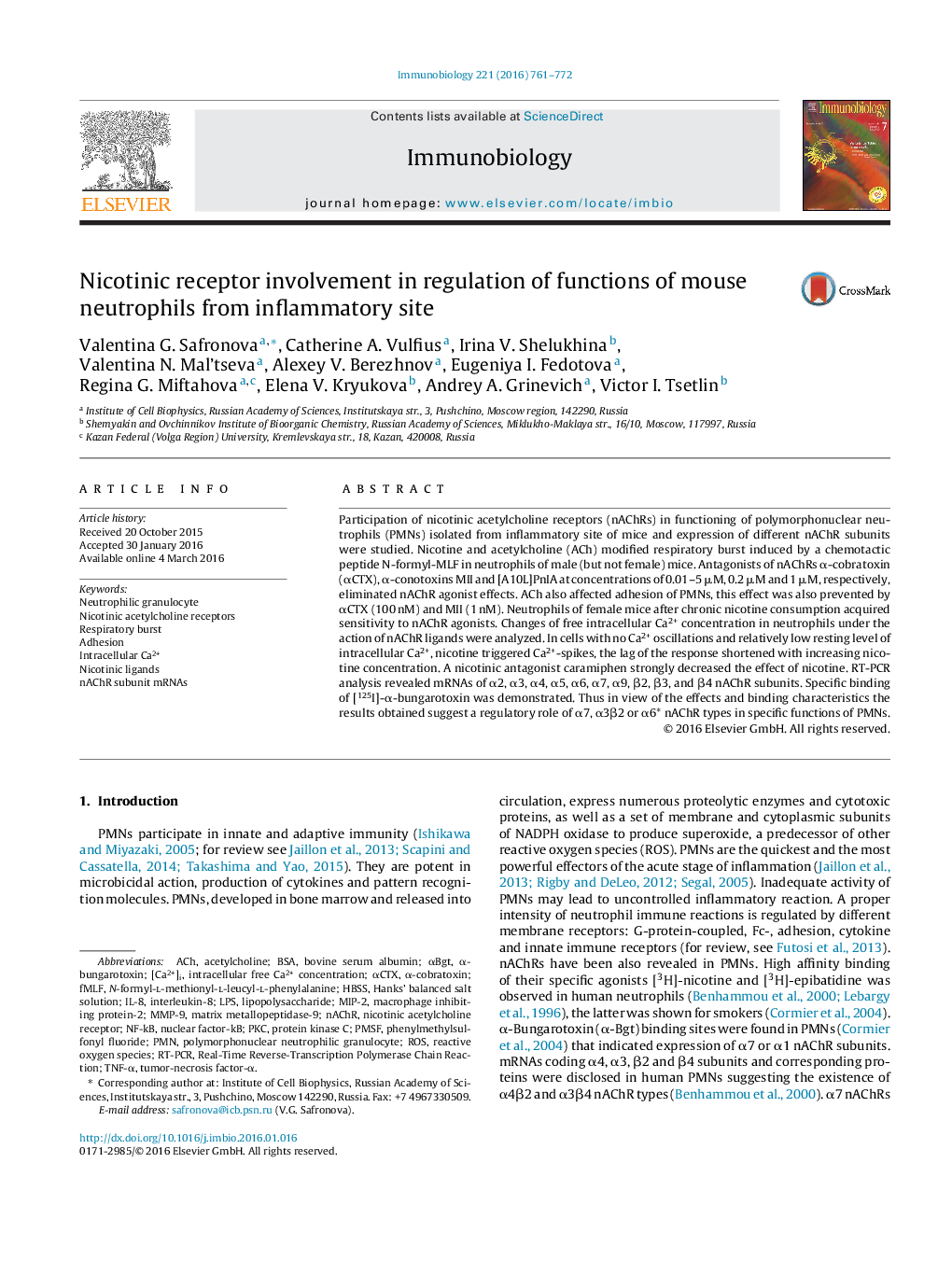| Article ID | Journal | Published Year | Pages | File Type |
|---|---|---|---|---|
| 2182724 | Immunobiology | 2016 | 12 Pages |
•Modifying action of nicotine and acetylcholine at low concentrations on N-formyl-MLF-induced ROS production and adhesion of neutrophils from inflammatory site of mice was demonstrated.•Antagonists of nicotinic acetylcholine receptors (nAChRs) eliminated agonist effects. Nicotine induced Ca2+-spiking activity which was prevented by nAChR antagonist. RT-PCR analysis revealed the expression of mRNAs encoding α2, α3, α4, α5, α6, α7, α9, β2, β3, and β4 nAChR subunits.•The data suggest involvement of nAChRs of α7 and possibly α3β2 or α6* subtypes in regulation of specific neutrophil functions.
Participation of nicotinic acetylcholine receptors (nAChRs) in functioning of polymorphonuclear neutrophils (PMNs) isolated from inflammatory site of mice and expression of different nAChR subunits were studied. Nicotine and acetylcholine (ACh) modified respiratory burst induced by a chemotactic peptide N-formyl-MLF in neutrophils of male (but not female) mice. Antagonists of nAChRs α-cobratoxin (αCTX), α-conotoxins MII and [A10L]PnIA at concentrations of 0.01–5 μM, 0.2 μM and 1 μM, respectively, eliminated nAChR agonist effects. ACh also affected adhesion of PMNs, this effect was also prevented by αCTX (100 nM) and MII (1 nM). Neutrophils of female mice after chronic nicotine consumption acquired sensitivity to nAChR agonists. Changes of free intracellular Ca2+ concentration in neutrophils under the action of nAChR ligands were analyzed. In cells with no Ca2+ oscillations and relatively low resting level of intracellular Ca2+, nicotine triggered Ca2+-spikes, the lag of the response shortened with increasing nicotine concentration. A nicotinic antagonist caramiphen strongly decreased the effect of nicotine. RT-PCR analysis revealed mRNAs of α2, α3, α4, α5, α6, α7, α9, β2, β3, and β4 nAChR subunits. Specific binding of [125I]-α-bungarotoxin was demonstrated. Thus in view of the effects and binding characteristics the results obtained suggest a regulatory role of α7, α3β2 or α6* nAChR types in specific functions of PMNs.
